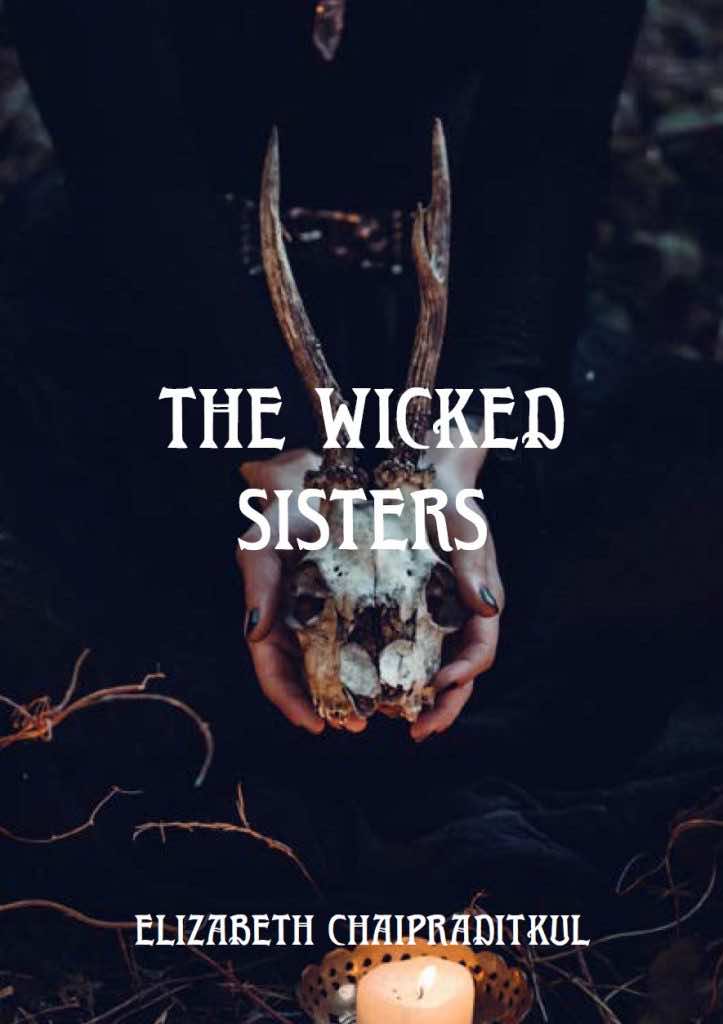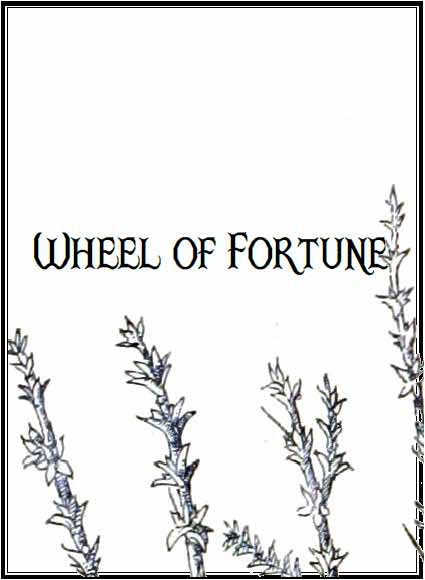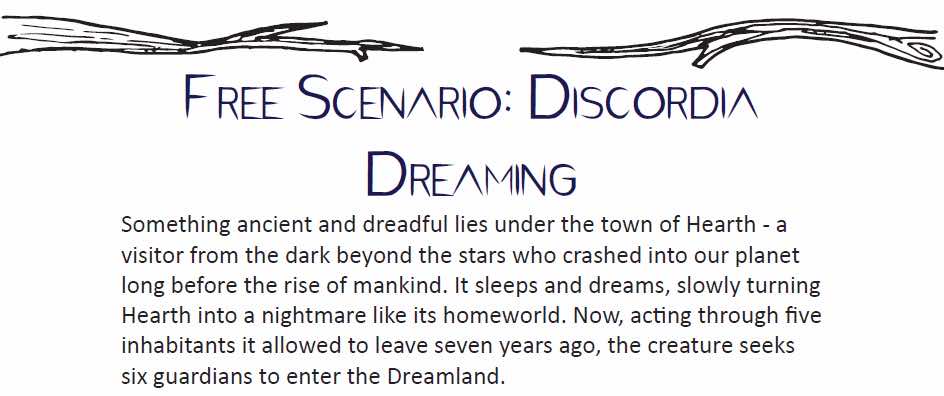In the last weeks we have followed a Kickstarter campaign, also managing to interview the authors and now we have finally been able to review two of the twelve role-playing games in the An Indie Game Anthology collection and we can tell you our opinion about it. Specifically, these are The Wicked Sisters and We Die Here, received free of charge in PDF format.
Preview of the general characteristics of An Indie Game Anthology
The RPGs of An Indie Game Anthology that we received in preview have common features, able to give coherence to the whole work. I really liked this approach, because it manages to make harmonious a collection of very heterogeneous products.
First of all, the creative process is always the same: one of the two authors writes and the other revises. The roles often reverse, effectively giving half of the credit to both. From this it follows that the twelve RPGs are only in English.
The two authors prove to be sensitive to thorny issues, always proposing a paragraph to underline the importance of deciding in advance if there will be themes that it is better not to touch in session. Excellent idea, often overlooked even by bigger projects.
At the beginning of each game (only after the list of supporters and the index) there is a table in which its main characteristics are contained, in order to give the right context without having to read all the mechanics. It is very concise but equally useful and contains: the need for a master or not, the number of players, the duration of a game, the perfect food to accompany it and the most evocative place to better appreciate the proposed themes.
This information anticipates the main characteristics that these RPGs have in common: very slender narrative systems that mainly aim to create deep, intense, bizarre and almost mystical scenes. All of this is contained in the next part, which explains what each game consists of.
At the end you can find any accessories to include in the game, such as the character sheets (where necessary).
The Wicked Sisters


A story of women chosen by fate…
The Wicked Sisters tells the story of some ancient women who received gifts, each from a different entity. These gifts are powers they can rely on, but be careful not to exhaust them. These abilities make them appear different and weigh heavily on their fate.
The women, so united as to be almost sisters, begin a boat crossing to reach new lands. The reasons can be varied and looking into the murky waters and each of them receives a Dark Prophecy. One or more sisters could end up in the water and drown: the visions are difficult to sustain.
Once docked, the real adventure begins: a spiritual journey. Each woman will have a scene dedicated to her, in which the other characters also participate. In each of them there will be moral dilemmas and situations that will make you choose between the individual and the coven, without neglecting the ethics regarding the characters encountered. If you want you can also increase the number of scenes dedicated to each woman, but not if you want to keep the duration of the game suitable for a one-shot.
The session ends in two circumstances: when at least one sister ends her journey (to pass on the descendants) or when all leave the scene. It’s impossible to have a narrative death: women are protected from fate and therefore can be injured, but never killed. The only case in which this occurs is when you run out of power. When this happens, the player decides how to get the character out of the scene, also leaving narrative “signs” of her passage. In this case it can be a death or an abandonment of her path. The manual specifies that those who lose their character can observe the session or assist the master.



… Through cards that mark their path
The game system is based on reading a tarot deck. Their use covers every mechanic present, from the background of one’s character to the use of his powers, even to the description of any death circumstances. Each card has a particular meaning (also based on whether it is straight or upside down) which is explained in the manual.
The tarot deck is also provided in PDF along with the manual, but honestly the graphics seemed far too flat. Fortunately, any Tarot deck in our possession can be used. To be honest, the aesthetic quality of the manual itself is at least rough. The layout and font are appreciable, but the absence of images is not so good for me. The only two graphic inserts are the beautiful cover and a low resolution motif that decorates every other page.
At the bottom of the work there are the characters sheets, five valid choices for the players. Each one has to select a different sister; not even a name will be required: an epithet will be enough to describe the character in an evocative way. After the selection, it is necessary to choose which aspect and which power you want from the three alternatives proposed. Finally you have to fill in the last required fields (Dark Prophecy and reading of the Past, Present and Future) with what the tarot cards reveal.
We Die Here


The events of a claustrophobic town…
This role-playing game is deeply inspired by a particular sub-genre of films and TV series to which, for example, Twin Peaks, Dark and It belong. We Die Here narrates the events of a group of characters confined in a small inhabited center. This approach enhances horror tones, always making players feel trapped. The sense of claustrophobia is given by this community in which everyone knows each other, but never completely.
The characters (both players and non-players) are all built in the same way: they are describe physically and temperamentally and defined through three key points. The Need indicates something that the character cannot renounce, a constant concern of his; his Want represents what he would like to achieve or do; the Secret indicates something unknown to him throughout the community. The latter is the only one not to be shared among the players. And in case you can’t find the right ideas, a handy table suggests valid options for the three characteristics.
An additional character must be defined with at least the same accuracy: the town. The aim is to make it alive and participate in the events narrated, as if it had its own will. It will also have the three key characteristics of the other characters, but also a peculiarity that prevents the inhabitants from leaving. The secret of the city is often something shady and dangerous, maybe even a mysterious and lethal monster.
Needs, Wants and Secrets do their best when they intertwine with each other, creating a web of human relationships and creepy backgrounds. In this regard, the narrator is also advised to graphically keep track of these relationships.



… Whose danger emerges with each die roll
The game system is very quick and narrative: for each test a certain number of d6s is thrown (minimum 2, maximum 5) and each result of 5 or 6 corresponds to a success; more successes can lead to further benefits. The number of dice to be used depends on various factors, including the influence of your Needs, Wants and Secrets, collaboration with other characters or any obstacles. A convenient table summarizes all the cases.
There are no further rules, not even for combat. The reason? Mortality is very high; failing a test to avoid being hit by a chainsaw simply causes death. And this also helps to increase the sense of tension. Those who wish to have more margin of error can adopt the Three Strikes rule; it provides some negative consequences before the definitive departure of the character.
Although the game is designed for one-shot lasting 2-4 hours, this lethality could push players to have a spare character in case their main one dies early in the session. The game is divided into scenes and all together they compose the entire narrative arc. If desired, it is possible to create longer campaigns, in which each session represents an episode. This opportunity further increases immersion in this claustrophobic context.
The manual ends with a nice scenario already built, Discordia Dreaming. It already contains everything you need to play, including five pre-made character sheets.
For the rest there are very few illustrations, repeated several times and whose quality is nothing exceptional, although it always remains in theme with the contents. A motif decorates each page, but not in a memorable way. For the rest, pagination and fonts are clean and functional.

